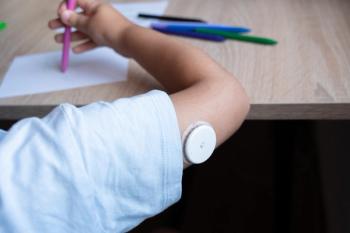
More screen time at age 1 year associated with developmental delays at 2, 4 years
Study authors concluded that developmental delay domains should be separately considered when discussing screen time and potential delays in childhood development.
According to a JAMA Pediatrics study published in August 2023, a dose-response association was observed between screen time for children at age 1 year and developmental delays at ages 2 and 4 years in problem-solving and communication.
Video games, mobile phones and devices, watching television and the use of other electronic devices all add up in screen time. Organizations such as the American Academy of Pediatrics (AAP) and World Health Organization (WHO) have recommendations limiting screen time while promoting physical activity. One recommendation is the limiting of screen time to 1 hour per day for children aged 2 to 5 years; however only a minority of children meet this guideline. With increasing screen times observed in recent years, investigators aimed to determine what associations exist between screen time and later developmental delays, and if these associations continue with age.
Conducted under the Tohoku Medical Megabank Project Birth and Three-Generation Cohort Study, this analysis included 7097 mother-child pairs from 50 obstetric clinics and hospitals in the Miyagi and Iwate prefectures in Japan. Data analysis for the current study was conducted on March 20, 2023.
Screen time exposure for children aged 1 year was assessed with a questionnaire. The study included 4 screen time categories: Less than 1 hour per day, 1 to 2 hours per day, 2 to less than 4 hours per day, and 4 or more hours per day. Specifically, the questionnaire asked, “On a typical day, how many hours do you allow your children to watch TV, DVDs, video games, internet games (including mobile phones and tablets), etc.” The Ages & Stages Questionnaires, Third Edition (ASQ-3) was used to assess developmental delay. Parents responded to this questionnaire on behalf of their children aged 2 and 4 years. The ASQ-3 featured 5 domains including: “communication (babbling, vocalizing, and understanding), gross motor (arm, body, and leg movement), fine motor (hand and finger movement), problem-solving (learning and playing with toys), and personal and social skills (solitary social play and playing with toys and other children).” Each domain was scored between a range of 0 and 60, with response options of “yes,” “sometimes,” or “not yet,” correlating to 10, 5, or 0 points, respectively. A total score from each domain that was less than 2 standard deviations (SDs) from its mean score was defined as developmental delay.
In the analysis, 3674 boys (51.8%) and 3423 girls (48.2%) made up the total 7098 children included. For screen time at 1 year of age, 3440 (48.5%) of children had less than 1 hour (category also included no screen time), 2095 (29.5%) of children had 1 to less than 2 hours, 1272 (17.9%) of children recorded 2 to less than 4 hours, and 290 (4.1%) of children had 4 or more hours. Developmental delay at age 2 was observed in the communication (361 children [5.1%]), gross motor (400 children [5.6%]), fine motor (329 children [4.6%]), problem-solving (301 children [4.2%]), and personal and social skills domains.
For the communication domain at 2 years, the odds ratio (OR) was 1.61 (95% CI, 1.23-2.10), for 1 to less than 2 hours of screen time per day, 2.04 (1.52-2.74) for 2 to less than 4 hours of screen time per day, and 4.78 (3.24-7.06) for 4 or more hours of screen time per day. In the fine motor domain, OR was 1.74 (1.09-2.79) for 4 or more hours per day vs less than 1 hour per day of screen time. OR for problem-solving was 1.40 (1.02-1.92) for 2 to less than 4 hours of screen time per day, and 2.67 (1.72-4.14) for 4 or more hours vs less than 1 hour per day of screen time. In the personal and social skills domain, OR was 2.10 (1.39-3.18) for 4 or more hours of screen time per day vs less than 1 hour per day. At 4 years, associations regarding risk of developmental delay were observed in the communication domain (OR, 1.64 [95% CI, 1.20-2.25]) for 2 to less than 4 hours of screen time per day and for 4 or more hours vs less than 1 hour of screen time per day (OR 2.68 [1.68-4.27]). Associations were also observed at 4 years of age in the problem-solving domain, with an OR of 1.91 (1.17-3.14) for 4 or more hours vs less than 1 hour of screen time per day.
Children at 1 year of age exposed to increased screen time demonstrated an association with developmental delays regarding problem-solving and communication at ages 2 and 4, respectively. Study authors concluded, “these findings suggest that domains of developmental delay should be considered separately in future discussion on screen time and child development.”
Reference:
Takahashi I, Obara T, Ishikuro M, et al. Screen time at age 1 year and communication and problem-solving developmental delay at 2 and 4 years. JAMA Pediatr. Published online August 21, 2023. doi:10.1001/jamapediatrics.2023.3057
Newsletter
Access practical, evidence-based guidance to support better care for our youngest patients. Join our email list for the latest clinical updates.














